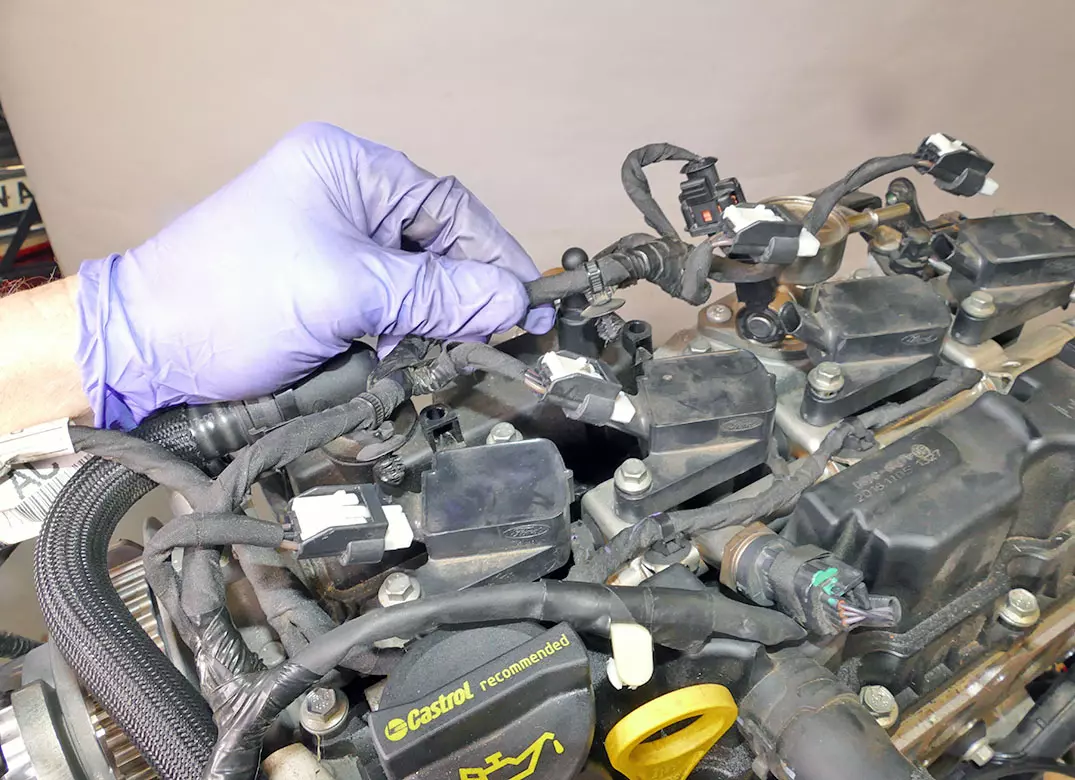
Gone are the days when your car informed you that something was wrong by simply breaking down or belching smoke of various hues (blue = expensive, white = very expensive, black = call the fire brigade). Now, a car can tell you pretty much what's ailing it through a warning light and a fault-code reader. Click here to see our test of the best fault-code readers you can buy.
Here, we explain what some of the most common fault codes mean.
P0300
This is a generic OBD-II code indicating that the engine's computer has detected random misfires in the engine. A misfire occurs when an insufficient amount of fuel is burned in a cylinder due to incorrect ignition timing, worn spark plugs, clogged injectors, low compression or other problems.
Almost universally, the P0300 code will be accompanied by other fault codes (P0301, P0302 etc) with the last digit indicating which cylinder actually has the misfire.
What are the symptoms of the P0300 code?
The most common symptom of a P0300 code is the illumination of the Check Engine Light, accompanied by rough idle or poor acceleration. In some cases, the misfires may be noticeable enough that you can actually feel them while driving.
What causes the P0300 code?
The most common cause for a P0300 code to appear is worn spark plugs. Other causes include a weak ignition coil, contaminated fuel injectors, excessive carbon build-up on the intake valves or low fuel pressure due to a faulty fuel pump. In rare cases, a vacuum leak or an exhaust leak can be the source of the problem. Timing issues or even a failed cylinder head gasket can also cause the code to appear.
Can you drive with a P0300 code?
A P0300 code most likely won't leave you stranded. However, if left unattended, the misfires can become more frequent and more intense, leading to major engine damage. That's why it is important to diagnose and repair this issue as soon as possible.
How to diagnose a P0300 fault code
To diagnose the fault code, you should use a scan tool to check for the additional codes that indicate which cylinder is affected. You will then want to test the spark plugs, fuel injectors and ignition coil. In some cases, further diagnosis may be necessary depending on what's causing the misfire, and this could include a compression test to find out if one cylinder has low compression.
How to fix the P0300 code
If the cause of the P0300 code is determined to be worn spark plugs or a faulty ignition coil, these will need to be replaced. If the cause is a clogged fuel injector, it too will need to be replaced. However, if the cause is something else, such as a vacuum leak or an exhaust leak, these leaks will need to be located and repaired. That's why it's vital to have your vehicle's Haynes manual by your side.
It is also important to make sure the timing of the engine is correct, and if it isn't, this will need to be adjusted.
In some cases, the top end of the engine may need to be removed and overhauled if the misfires are caused by a failed cylinder head gasket. This is why it is important to diagnose and repair this issue as soon as possible before more damage occurs.
Finally, once all repairs have been made, it's important to reset the fault codes with a scan tool, to extinguish the warning light.
